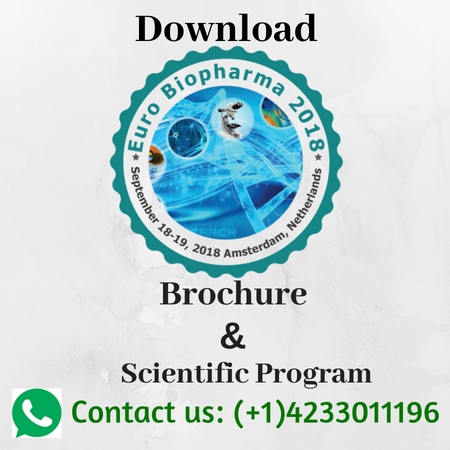
Jana Tchekalarova
Institute of Neurobiology, Bulgaria
Title: Neuropharmacological studies of novel melatonin derivatives
Biography
Biography: Jana Tchekalarova
Abstract
The majority of available literature on experimental animals revealed that melatonin has anticonvulsant action in acute seizures tests with different mechanism of action. An important advantage of melatonin as an add-on option in a therapy of epilepsy is associated with its low toxiticy, antioxidant activity as well as its ability to synchronize disturbed circadian rhythms in epileptic patients. A series of melatonin analogues, containing indole scaffold, were synthesized and their anticonvulsant activity was tested on ICR mice by measuring the time of three different seizure phases (myoclonic, clonic and tonic) induced by intravenous infusion of pentylenetetrazol (PTZ). The novel melatonin derivatives were synthesized according to the classical method by condensation of hydrazones with 5-methoxyindole-3-carboxaldehyde or 5-benzyloxyindole-3-carboxaldehyde. The hydrazide-hydrazones with indole moyeties were purified by recristalization and the molecular weights were determined, using ES-MS. The compounds were injected intraperitoneally at doses of 30, 60 and 100 mg/kg 30 min before PTZ. The most potent compounds, with significantly increased thresholds for myoclonic, clonic and tonic seizures compared to vehicle were the derivatives with 2-thienyl and p-Cl-phenyl fragments at a dose of 60 mg/kg, which effects was comparable to that of melatonin at the same dose of 60 mg/kg, used as a positive control. None of the compounds displayed neurotoxicity in the rota-rod test. In silico assessment of their BBB permeability indicated them as CNS active agents. Ðœolecular docking was performed into a human gamma-aminobutyric acid (GABAA) receptor and depicted good binding properties of melatonin derivatives, considered in this study. Based on anticonvulsant screening results these newly synthesized melatonin derivatives will be explored in other seizure tests with different mechanism of action as well as in models of epilepsy. Application grant: National Science Fund of Bulgaria (#
DH13/16, 21.12.2017).

